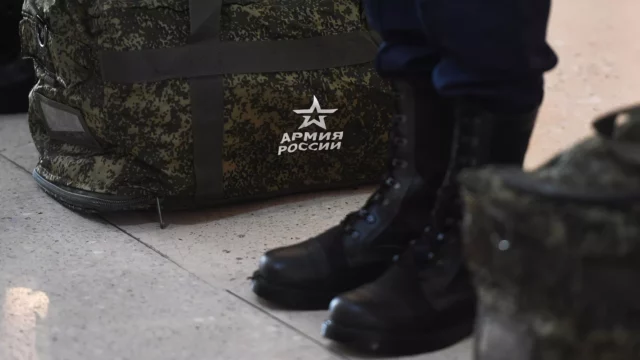
Communication Entropy in the Kremlin vs. Putin’s Information Isolation
Publication: Eurasia Daily Monitor Volume: 20 Issue: 102
By:

On June 13, Russian President Vladimir Putin met with the war correspondents from a number of state-owned and state-affiliated television channels and newspapers, as well as several Telegram “military-patriotic” bloggers. Depending on the source, the event was the third or the fourth meeting of this group since June 2022, when Putin met with war correspondents for the first time. However, it was the first such meeting of 2023 and the first of these meetings that was publicly reported and recorded. According to official statements, these meetings are convened to provide Putin with additional sources of information that differ from the official bulletins from the Ministry of Defense as well as other subordinated state institutions. Besides providing additional evidence of growing systemic distrust and information distortions within Russia’s authoritative system, the most recent meeting was primarily aimed at improving Putin’s public image as a well-informed ruler. And this last fact demonstrates that the reality of Putin’s access to information on subjects such as the war in Ukraine and public sentiments toward the “special military operation” may in fact be the opposite: The Russian president suffers from either a growing problem of communication entropy within the Russian authoritarian system (i.e., the increased breakdown in information collection, processing and sharing between different levels of the government), or deliberate information isolation, as maintained by Putin’s inner circle and security detail (Regnum, June 20, 2022; Yarnovosti.com, October 5, 2022; Kremlin.ru, June 13).
One major fact that favors the communication entropy hypothesis are the numbers on personnel within the Russian Armed Forces as provided by Putin himself. Recently, he declared that 150,000 contracted soldiers and 6,000 volunteers (soldiers who sign short-term contracts and serve in irregular volunteer formations) have been recruited in 2023, with 9,500 contracted soldiers recruited weekly. On the one hand, these numbers confirm the unusual dynamics for military recruitment that were earlier made public by Deputy Chairman of the Russian Security Council Dmitry Medvedev and analyzed by this author: 117,400 contracted soldiers and volunteers recruited as of May 19 and 134,000 contracted soldiers and volunteers as of June 1 (RIA Novosti, May 19; Scrf.gov.ru, June 1; EDM, June 12). Yet, on the other hand, on June 22, Russian Minister of Defense Sergei Shoigu declared a different set of statistics: 114,000 recruited contracted soldiers and 52,000 recruited volunteers, with an average daily recruitment of 1,336 new personnel (Interfax, June 22). Thus, according to Shoigu, the total number of soldiers recruited in 2023 is 166,000, with an average weekly recruitment of 9,352 persons.
Consequently, the contradiction in these details together with the linear dynamic of such precise numbers, which are impossible if they relate to the behavior of those who decide to join the Russian Armed Forces, testify that these published numbers are rather doubtful, if not intentionally falsified. That means that either Putin and Shoigu are receiving different information and merely trying to combine their data, or they do know the real numbers for recruitment, which are critical for key strategic reasons, and knowingly confuse these statistics in their public statements. In either case, overall, this means a growing potential for miscommunication and mistakes in the decision-making process, especially regarding the true state of Russian manpower in Ukraine.
Other major troubles with communication within the Kremlin’s leadership appeared during the mutiny of Yevgeny Prigozhin and his Wagner Group on June 23 and 24. To begin with, it appears that almost no one within the Russian Armed Forces and security agencies (e.g., the Federal Security Service, Rosgvardia and others) can act according to their immediate duty without clear, step-by-step orders from above. For example, there was no resistance from the military units charged with guarding the Southern Military District’s headquarters in Rostov and no troops were raised on high alert in the neighboring regions as the military orchestra continued to play foxtrots in Samara (Mil.ru, June 24). The only visible activity came from Russian military aviation, which ended up losing one command-and-control aircraft, as well as three electronic warfare helicopters, two combat helicopters and one transport helicopter (BBC News Russian, June 26). Of course, there may have been clear orders from these units’ superiors not to interrupt the mercenaries march; however, that would mean the air force either did not receive those orders or were sent different ones.
Furthermore, no camera crews or correspondents from state-owned or state-affiliated media were witnessed on the ground. In truth, those with whom Putin met on June 13 and whom he considered as valuable sources of information were absent on the “scene.” Even the local offices of state-owned media giant VGTRK did not send camera crews to cover the developments surrounding the status of the Southern Military District’s headquarters (YouTube, June 24). Such ignorance means that either the Kremlin was not interested in receiving additional information on the crisis or that the state-owned media and some of the “military-patriotic” bloggers were not interested in attracting too much public attention to Prigozhin’s antics. Either one of these options points to a lack of reliable information in Moscow (the so-called “communication entropy”), if not the intentional isolation of communications within the Kremlin itself. The last time such behavior was observed in Russia was in August 1991 when Mikhail Gorbachev’s ministers tried to overthrow him and created an information vacuum to achieve that goal. While the current situation largely differs from what Gorbachev was dealing with, the cropping up of a similar information vacuum once again is something to keep an eye on.
As a result, Putin’s authoritarian regime is demonstrating its growing systemic weakness that can hardly be effectively compensated for within the current power structure. Consequently, Russia appears to be moving ever closer to major domestic political turbulence.



